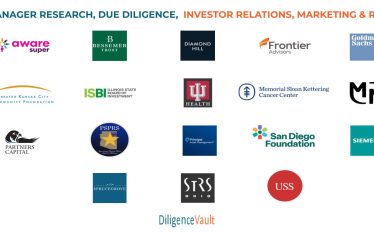We are pleased to introduce the “Seriously” channel of our blog with a focus on a critical component of investment success for multi-manager portfolios: Risk Management.
Selection risk for an investor with multi-manager portfolio has increased, stemming from the proliferation of niche strategies as well as the introduction of fringe investment strategies. In this landscape, how do investors get rewarded for the risk they underwrite? How do investors ensure that managers have a strong risk culture to avoid disappointing performance?
How Do Investment Managers Think About Risk?
Not all annualized returns or IRRs are created equal. Managers take different levels and types of risks to achieve the same level of return. As an investor, it is important to consider what the best way to evaluate and, more importantly, influence the way managers think about risk management.
A manager’s risk management approach largely depends on who is in the driver seat, setting the tone on risk culture and governance. More often than not, the CIO or lead Portfolio Manager drives a portfolio’s risk decisions, serving as the first line of defense. Institutional managers usually augment with a risk team that may or may not be empowered to offer an independent line of thought.
Generally, the absence of a dedicated risk manager is thought to be a key due-diligence red flag.
However, it does not necessarily point to absence of risk management. Rather, investors need to assess three key areas to understand the role risk management plays in investment decision-making beyond the regulatory and investor risk reporting and check-the-box approach adopted widely in the industry.
1. Aligning expertise: Is the Manager equipped for the complexity of assets and strategies under management?
With technology and analytics being largely commoditized, having the right measurement system is a necessity and no longer a differentiator.
Rather, a solid understanding of three elements is essential for determining whether managers are able to deliver consistent performance across market cycles
- Is manager using the right risk and performance measures for a given investment strategy? How best are they equipped to look at known and unknown sources of risk? Is the right measure concentration risk, Total Value to Paid-In (TVPI), Value at Risk (VaR), leverage ratios, convexity profiles or something else entirely? Or is it a process to question the unknown?
- Does the manager understand and differentiate expected vs. lights-out scenarios? Do they have a process to question the unknown? What fail safe mechanisms do they have in place?
- What are the governance and control frameworks or other processes in place to ensure the risk analysis and flags informs future investment decisions?
2. Right sizing assessments: How is risk management viewed in structurally different worlds of investing?
Risk management translates differently to different types of strategies. Knowledge of these differences is paramount when evaluating a manager’s risk management framework.
- Long only portfolios with limited active component: typically focus on degree of benchmark compliance and sources of risk and return attribution.
- Absolute return / hedge fund portfolios: have huge variability in risk management driven by diversity in the underlying strategies.
An investor’s job is to get a sense of their investment and risk regime and its implications on the managers’ risk profile. - Private equity firms: are typically less quantitative and not likely to have a dedicated risk team. Risk is evaluated at the individual deal level through portfolio company due-diligence, managing entry valuations, structural mitigations, and at the portfolio level by setting diversification guidelines, identifying downside risks and hedging portfolios.
In addition, firm size and the market structure these managers operate in adds further complexity. Viewing a manager’s risk management framework in the context of these interconnected factors ensures investors evaluate risks within the context of the underlying assets being acquired.
3. Learning from failures: How has the manager weathered periods of stress or poor performance? What did it look like?
How often have we invested with a manager with a near perfect “unicorn-ish” track record, with consistent performance, but no track record during periods of stress or material losses in the portfolio? Post investment, the manager inevitably experiences a downturn, has one large loss or a series of small missteps, and may struggle to get back to the hurdle rate or high water mark.
How a manager deals with a disruptive negative performance or a down valuation should be a key area of research, as often it is much more difficult to recover from a loss than it is to continue record gains.
It is important to understand how their investment process and risk framework have adapted. In addition, understanding downside risk management processes would allow investors to know how a manager reacts and what steps are expected during sell-off periods. Is it stop-loss forced selling? Managed hedging? Doubling down? Or doing nothing? This approach facilitates investor and manager collaboration in managing expectations during period of stressed valuations.
From Understanding to Influence
Managing the selection risk of investment managers is fascinating and requires triangulation of external and internal factors – the risk present in underlying markets, a manager’s expertise across market and business cycles and the framework managers employ to control and manage this risk. In doing so, the benefit of increasing quantity of information diminishes after a certain point without targeted questions or the right information management tools.
To be continued… Next, we discuss the stage that follows assessment: Influencing the Return Outcomes.



